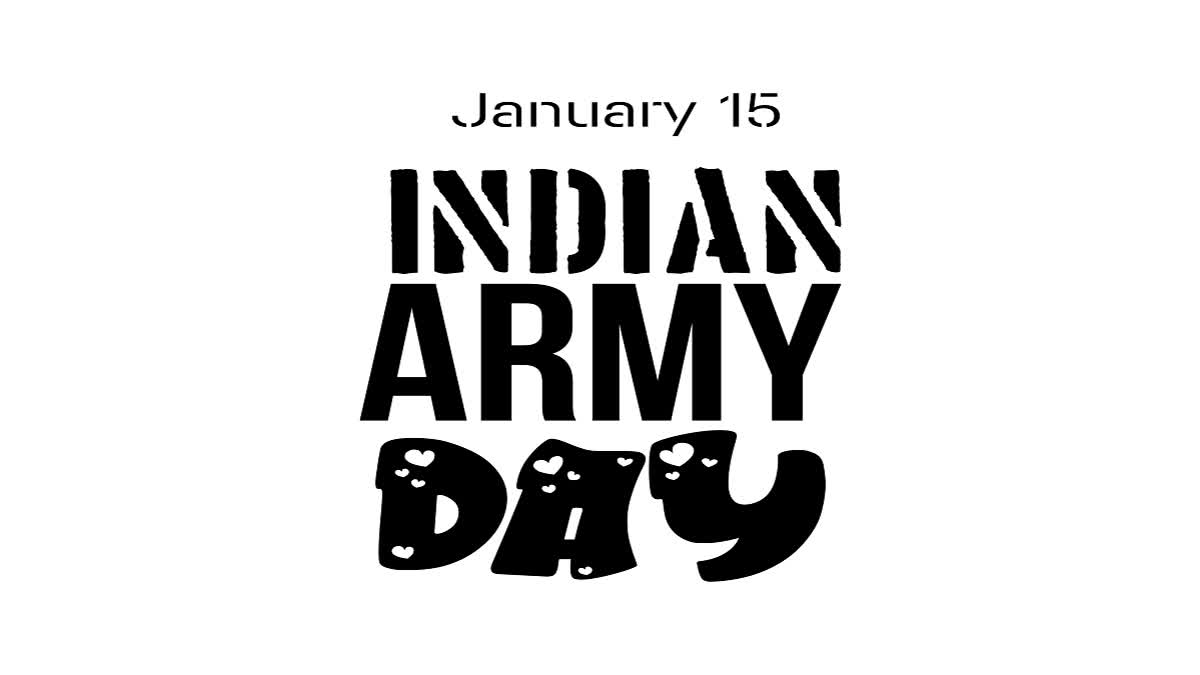Hyderabad:In a bid to honour the 1949 commissioning of the Indian Army's first Indian contingent, Indian Army Day is commemorated on January 15 every year. It was on this day that General KM Cariappa was appointed as the first Commander-in-Chief of Independent India. Cariappa who led Indian forces to victory in the 1947 war, succeeded General Sir FRR Bucher as the last British Commander-in-Chief in 1949. As a mark of reverance of Cariappa and the armed forces, Army Day is observed annually.
History of Indian Army - The Indian Army has a rich history that extends over ten millennia into the past. The foundation upon which the Indian Army is set up is provided by the two great epics, the Ramayana and the Mahabharata. The Sepoy regiments, indigenous cavalry, irregular horse, Indian Sapper, and minor companies raised by the three British presidencies were among the many forebears of the modern Army of India. During the 19th century, the British Raj elevated the Army by assuming the former presidential armies, uniting them, and placing them under the royal authority. Both World Wars were fought by the British Indian Army.
After India gained its independence in 1947, the British military was replaced by the armed forces. Many of the soldiers from World War II were released from their posts, and units were dissolved. India and Pakistan were given separate access to the dwindling armed forces. The Indian military participated in three conflicts with Pakistan in addition to one conflict with the People's Republic of China. In 1999, India and Pakistan fought the highest altitude mountain warfare in history, the Kargil War. The Indian Armed Forces are currently the second-largest soldier contributor to the peacekeeping force, having taken part in multiple UN peacekeeping missions.
Year of Technology Absorption-The Indian Army aims to gradually transform into a modern force that will have a new operational philosophy for introducing drones and counter-drones systems throughout infantry, artillery, and armoured battalions. In addition to bridging other conventional asymmetries, the army will observe 2024 as the "Year of Technology Absorption'' and establish Command Cyber Operations Support Wings (CCOSWs).
Challenges and Imperatives in 2024- India is currently negotiating a security environment that is quickly changing and characterised by dynamic internal and external concerns. An assertive China on the Line of Actual Control (LAC), ongoing tensions with Pakistan along the Line of Control (LOC), difficulties with internal security, and threats from the multidomain grey zone all contribute to the complex security environment, which makes things dangerous. In light of India's ambition to become Viksit Bharat@2047, it is critical that Surakshit Bharat take aggressive measures to address its security issues.
Challenges to National Defense:
China’s Assertive Posture - China continues to be the principal foreign threat, drawing India into a protracted geopolitical struggle. The purpose of China's diplomatic negotiations with India is to weaken that country's resources and fortitude. China subtly manipulates India's development narrative by supporting insurgencies, obstructing membership, and forming regional alliances.
Pakistan’s Perpetual Challenge-The 1947 split gave rise to the Kashmir dispute, which is still a hot spot today due to ongoing proxy conflicts and cross-border infiltrations. Pakistan's strategic culture presents a recurring difficulty because it is firmly anchored in its military superiority and revisionist ideology.
Collusive Threat- India faces a collusive threat from the growing China-Pakistan partnership, which is frequently referred to as being "deeper than the oceans and higher than the mountains." The two countries' coordinated anti-Indian strategy is exposed by their collaborative actions, putting India at risk of a two-front conflict.
